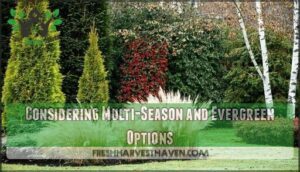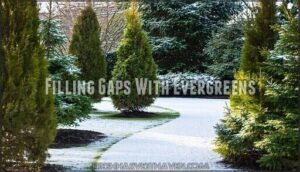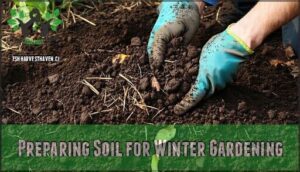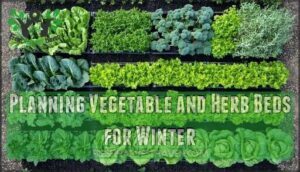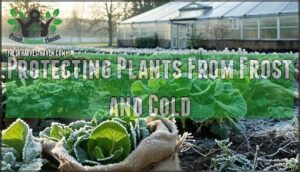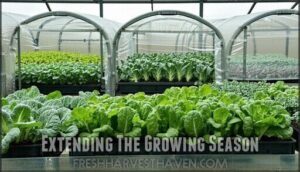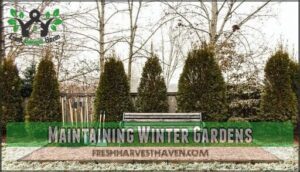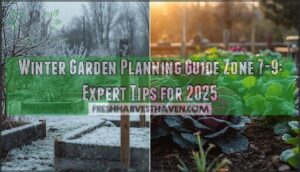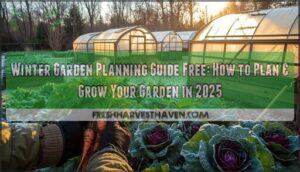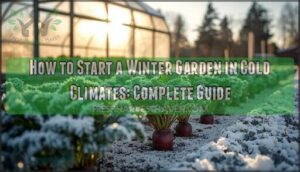This site is supported by our readers. We may earn a commission, at no cost to you, if you purchase through links.
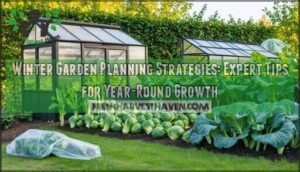 Successful winter garden planning strategies start with understanding your hardiness zone and selecting cold-resistant plants.
Successful winter garden planning strategies start with understanding your hardiness zone and selecting cold-resistant plants.
You’ll want to prepare beds with compost and mulch before the first frost hits. Choose vegetables like kale, Brussels sprouts, and winter squash that actually thrive in cooler temperatures.
Create microclimates using row covers, cold frames, or simple windbreaks to extend your growing season. Don’t forget about winter herbs like rosemary and thyme that’ll keep your kitchen stocked with fresh flavors.
Smart timing matters too—plant cool-season crops in late summer for winter harvests. The secret lies in working with winter’s rhythms rather than fighting against them.
Table Of Contents
- Key Takeaways
- Winter Garden Planning Essentials
- Selecting Cold-Hardy Plants for Success
- Creating Year-Round Visual Interest
- Preparing Soil for Winter Gardening
- Planning Vegetable and Herb Beds for Winter
- Protecting Plants From Frost and Cold
- 6 Best Tools and Supplies for Winter Gardening
- Extending The Growing Season
- Maintaining Winter Gardens
- Planning Ahead for Spring Success
- Frequently Asked Questions (FAQs)
- Is it worth planning a Winter Garden?
- How do you start a garden in the winter?
- How do I Keep my Garden healthy during winter?
- What makes a beautiful winter garden?
- Why is winter a good time for a garden?
- What is a Winter Garden?
- How to plan a winter garden?
- How to prep your garden beds for winter?
- How to style a winter garden?
- What vegetables go in the winter garden?
- Conclusion
Key Takeaways
- Know your hardiness zone and select appropriate plants – You’ll succeed by researching your USDA zone and choosing cold-hardy vegetables like kale, Brussels sprouts, and winter squash that actually thrive in freezing temperatures.
- Prepare soil with compost and mulch before frost – You cannot skip this step; add 2-3 inches of aged compost and apply 4-6 inches of organic mulch to insulate roots and maintain soil health through freeze-thaw cycles.
- Create protective microclimates with covers and structures – You’ll extend your growing season significantly by using row covers, cold frames, or simple windbreaks to shield plants from harsh conditions while maintaining proper ventilation.
- Time your plantings strategically for winter harvests – You should plant cool-season crops in late summer (6-8 weeks before the first frost) to ensure they mature before winter’s grip tightens and can provide fresh produce throughout the cold months.
Winter Garden Planning Essentials
Successful winter gardening starts with thorough preparation that sets the foundation for cold-weather success.
You’ll need to review your previous garden’s performance, assemble the right tools, and create a strategic plan that accounts for your garden’s unique conditions and winter’s challenges.
Reviewing Your Previous Garden Calendar
Start by examining your garden calendar from the previous year to identify critical weather patterns and evaluate both your planting successes and problem areas that need attention.
This garden observation forms the foundation for effective winter garden planning, helping you make informed schedule adjustments for the upcoming season.
Key areas to review include:
- Weather patterns – frost dates, unexpected temperature drops, and seasonal rainfall timing
- Planting successes – which varieties thrived and produced well in your conditions
- Problem areas – spots with poor drainage, insufficient sunlight, or recurring pest issues
- Crop rotation needs – tracking what grew where to maintain soil health and prevent disease.
Your past garden calendar reveals valuable insights that directly inform your early spring planning decisions.
Note which vegetables performed best during cooler months, when protection became necessary, and how timing affected harvest quality.
This systematic review eliminates guesswork and creates a strategic approach to planning winter garden layouts and schedules.
Preparing a Winter Toolkit
Nothing beats having everything you need when winter hits your garden.
Your winter toolkit should include sharp pruning tools for essential dormant-season cuts, insulated winter gloves that won’t crack in freezing temperatures, and a reliable soil thermometer to monitor ground conditions.
Proper selection guarantees the longevity of tools.
Don’t forget tool maintenance supplies—clean, oiled tools perform better and last longer through harsh winter conditions, which is crucial for the longevity of your equipment.
Assessing Garden Structure and Layout
Three essential steps will transform your garden’s backbone for winter success.
First, evaluate your current garden structure by walking through each area and noting how winter sunlight patterns differ from summer—this sunlight maximization assessment guides plant placement decisions.
Second, identify drainage improvement opportunities by checking for low spots where water pools, as winter’s freeze-thaw cycles can damage poorly drained areas.
Updating Planting and Care Schedules
Revisiting your garden calendar throughout winter reveals patterns you’ll miss otherwise.
Update planting dates for winter varieties, adjust fertilizer schedules based on soil temperature readings, and plan pest control measures for dormant-season threats.
Create microclimate adjustments around sensitive plants, then mark your winter harvest schedule to maximize fresh produce during cold months, considering dormant-season threats.
Selecting Cold-Hardy Plants for Success
Choosing the right cold-hardy plants transforms winter gardening from a struggle into success, but you’ll need to match your selections to your local climate conditions.
You can’t simply guess which plants will survive—proper research into hardiness zones and plant characteristics guarantees your winter garden thrives instead of merely surviving.
Researching USDA Hardiness Zones
Understanding your USDA Plant Hardiness Zone forms the foundation for successful winter garden planning.
Your zone determines which plants can survive local freezing temperature zones, but zone limitations exist—microclimates within your garden create warmer or cooler pockets that affect plant adaptability.
Knowing your plant hardiness zone helps determine suitable plants.
Here’s what drives successful zone research:
- Local expertise trumps maps – nurseries know hardiness exceptions in your area
- Microclimate influence matters – south-facing walls offer extra protection
- Future changes affect planning – warming trends shift traditional boundaries
- Plant adaptability varies – some exceed their rated zones with proper frost protection methods
Remember, zones guide your cold weather crops selection, but they’re just one tool in your winter garden planning arsenal.
Choosing Zone-Appropriate Plants
When selecting plants, you’ll match hardiness ratings to your USDA Plant Hardiness Zone for guaranteed survival.
Local nurseries stock cold-hardy vegetables and hardy winter plants suited to your microclimate creation needs. Native cultivars outperform generic varieties, offering superior frost tolerance and overwintering strategies for sustained cold weather crops success.
Understanding your area’s frost date calendar is essential for timing planting.
| Zone Range | Cold-Hardy Vegetables | Hardy Winter Plants |
|---|---|---|
| 3-4 (-40°F to -30°F) | Kale, carrots, hardy onions | Blue spruce, winterberry, hostas |
| 5-6 (-20°F to -10°F) | Brussels sprouts, parsnips, leeks | Boxwood, red twig dogwood |
| 7-8 (0°F to 10°F) | Spinach, arugula, Swiss chard | Winter jasmine, ornamental grasses |
| 9-10 (20°F to 30°F) | Lettuce, radishes, Asian greens | Rosemary, lavender, winter herbs |
| 11+ (40°F+) | Cool-season annuals, tender herbs | Tropical perennials, citrus trees |
Considering Multi-Season and Evergreen Options
Once you’ve chosen plants suited to your hardiness zone, expanding your vision to include multi-season performers transforms your winter garden into a dynamic landscape.
Year-round structure becomes achievable when you layer plants strategically, creating evergreen textures that anchor your garden design through seasonal shifts.
- Select evergreens with varied foliage – Combine needle-bearing conifers with broad-leaved varieties like boxwood for diverse winter interest throughout your layered planting scheme.
- Choose plants with winter berries – Holly, winterberry, and pyracantha provide colorful focal points when flowers fade, enhancing your winter garden planning with natural decorations.
- Include ornamental grasses – Feather reed grass and switchgrass maintain upright forms through winter, adding movement and texture to complement evergreen foundations in garden design.
- Plan for bark interest – Paper birch, red-twig dogwood, and Japanese maple offer striking winter appeal through colorful or textured bark that creates visual warmth.
Creating Year-Round Visual Interest
You can keep your garden visually appealing all year by combining evergreens, vertical elements, and winter-blooming flowers.
By planning for structure and color through every season, you guarantee your landscape remains interesting even when most plants are dormant.
Adding Vertical Elements and Trees
Anyone looking to boost winter garden design should consider trees and vertical elements for instant visual height and structure.
Think about tree selection for screening options and winter shelter, especially evergreens that hold their form year-round.
Mind space considerations—choose garden plant trees that fit your layout, adding layers and interest, and use verticals to anchor and protect your landscape, which is a key aspect of smart garden design.
Filling Gaps With Evergreens
Throughout winter, evergreens serve as the backbone of your garden design, preventing that dreaded barren landscape when deciduous plants drop their leaves.
Strategic evergreen selection fills empty spaces while providing essential visual screening and shelter creation.
Choose varieties that complement your existing winter structure, ensuring year-round interest through thoughtful winter garden planning that transforms cold months into seasons of quiet beauty.
Incorporating Winter-Blooming Flowers
Winter blooms breathe life into dormant landscapes when you strategically plan their placement.
These hardy performers deliver color when gardens need it most, transforming barren winter scenes into vibrant displays.
Consider these key winter bloomers for maximum impact:
- Snowdrops – Push through snow with nodding white flowers
- Hellebores – Christmas roses bring pink, red, or white blooms
- Winter jasmine – Bright yellow flowers contrast beautifully with purple pansies
- Camellias – Showy blooms need prominent planting locations for visual punch
Plant winter flowers in fall while soil stays warm, allowing root establishment before freezing temperatures arrive.
Position cyclamen and pansies where they won’t get buried under excessive mulch.
Fragrant varieties like winter jasmine pair perfectly with colorful foliage plants, creating layered displays that work through multiple seasons.
Proper bloom timing guarantees continuous winter gardening success.
Preparing Soil for Winter Gardening
Your winter garden’s success depends on soil that’s been properly prepared with the right nutrients and protection.
Start by incorporating 2-3 inches of aged compost or well-rotted manure into your beds before winter arrives.
Then apply a 4-6 inch layer of organic mulch like straw or shredded leaves to insulate plant roots from freeze-thaw cycles.
Adding Compost and Organic Fertilizers
Rich soil forms the foundation of winter garden success.
Looking at the paragraph about rich soil being the foundation of winter garden success, here’s an engaging blockquote in the same tone:
**Healthy soil equals thriving winter plants—it’s that simple.
You’ll want to incorporate 2-3 inches of aged compost or well-rotted manure into your beds before the cold sets in.
This organic matter boosts nutrient cycling and creates nutrient-rich soil that supports hardy plants through harsh conditions.
Time your organic fertilizer applications during fall preparation when plants can still absorb nutrients, and focus on sustainable sourcing by choosing local compost types that enhance soil health naturally.
Using Mulch for Insulation
Once your soil is properly amended, apply a 4-6 inch layer of organic mulch like straw, shredded leaves, or pine needles around plants.
This natural mulch creates insulating plant covers that regulate soil temperature and enhance moisture retention. You can find various types of mulch for this purpose.
Proper mulching also provides winter soil protection while supporting pest control through beneficial microorganisms that thrive beneath mulch layers.
Planning Vegetable and Herb Beds for Winter
When you’re planning vegetable and herb beds for winter, focus on choosing frost-hardy crops, hardy herbs, and the right sowing times to guarantee steady growth despite the cold.
Careful selection and timing help you maintain productive beds, even when temperatures drop and daylight hours shrink, ensuring steady growth.
Choosing Frost-Hardy Vegetables
Once you’ve prepared your soil foundation, focus on selecting winter vegetables that’ll thrive in your specific conditions.
Success depends on matching crop origins and hardiness ratings to your local climate, while understanding how frost protection enhances these coldhardy varieties.
- Root vegetables like carrots and parsnips become sweeter after frost exposure
- Leafy greens including kale and spinach tolerate temperatures down to 20°F
- Brassicas such as Brussels sprouts excel in cold conditions with proper soil amendments
- Alliums like garlic establish strong root systems during winter months
- Coldhardy varieties within each species offer superior frost tolerance for winter garden planning
Selecting Hardy Winter Herbs
Hardy herbs thrive through winter’s challenges when you understand herb hardiness zones and winter flavor profiles.
**Winter herbs develop deeper flavors when temperatures drop – cold stress concentrates their essential oils.
Thyme tolerates temperatures to 3°F, while parsley survives under snow cover.
Container herb gardening extends your growing season indoors. Focus on coldhardy plants like sage, rosemary, and oregano for reliable harvests.
These winter herbs develop concentrated flavors perfect for hearty seasonal dishes.
Timing Late-Summer and Fall Sowings
Once you’ve selected hardy winter herbs, maximizing your winter garden preparation requires strategic timing for late-summer and fall sowings.
Your planting schedule determines whether coldhardy vegetables will mature before harsh weather arrives.
Consider these sowing windows for winter success:
- 6-8 weeks before first frost – Plant spinach, kale, and Swiss chard when soil temperature stays above 50°F for maximum seed viability
- Late August sowings – Start Brussels sprouts and cabbage to guarantee proper crop maturity before winter’s grip tightens
- September plantings – Sow lettuce and arugula in cold frames, giving roots time to establish before freezing
- October timing – Plant garlic cloves and overwintering onions when soil cools but remains workable
- Winter planting dates – Schedule winter sowing of hardy seeds in December through February for spring emergence
Monitor frost dates closely and adjust your winter sowing timeline accordingly.
Proper timing transforms your garden into a productive winter wonderland.
Protecting Plants From Frost and Cold
Protecting your plants from winter’s harsh conditions requires understanding your local climate and implementing the right defensive strategies.
You’ll need to identify your freezing temperature zone, use proper insulation materials, and create protective microclimates that shield vulnerable plants from frost damage.
Identifying Freezing Temperature Zones
In terms of winter garden frost resistance, knowing your freezing temperature zones is your first line of defense.
Start by using a Zone Map—these handy guides reveal your area’s average minimum temperatures, which directly impact Plant Hardiness Ratings. For example, Zone 6a dips to -10°F, while Zone 8b rarely drops below 15°F.
Recognize that local temperature fluctuations and microclimates, like sheltered corners, can affect frost damage types and the impact of prolonged cold. Understanding frost versus freeze damage is essential for effective protection.
By understanding your zone, you’ll choose the right plants and frost protection techniques, ensuring effective cold weather preparation and smart use of insulating plant covers for your garden’s survival.
Using Thermal Blankets and Insulating Covers
When winter’s chill sets in, thermal blankets and insulating plant covers become your garden’s best defense.
Choose the right blanket material and cover weight for each plant—lighter covers for air circulation, heavier for deep cold. Good moisture control is key; covers should let water escape but keep warmth in.
Apply these frost protection techniques before a hard freeze. With proper winter garden insulation, you’ll shield tender plants and shrubs, ensuring strong plant protection all season.
Consider using specialized plant covers for superior protection.
Applying Mulch and Creating Microclimates
Beyond temperature drops, you’ll find that mulching and microclimates transform your garden into a fortress against winter’s harshest conditions.
Strategic placement of Mulch Types creates protective barriers that trap warmth and conserve moisture around vulnerable plants.
- Organic mulch layers (4-6 inches of straw or shredded leaves) provide insulation while allowing air circulation
- Snow barriers using evergreen boughs create natural Wind Protection and prevent ice damage to delicate stems
- Microclimate Benefits emerge near south-facing walls where reflected heat extends growing seasons by weeks
6 Best Tools and Supplies for Winter Gardening
Success in winter gardening depends heavily on having the right equipment at your disposal.
You’ll need specialized tools and supplies that can withstand cold temperatures while helping your plants thrive during the challenging winter months.
1. Fresh Halved Brussels Sprouts Pack
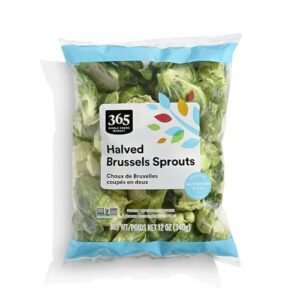
Stocking up on fresh halved Brussels sprouts transforms your winter garden planning from guesswork into guaranteed success.
These cold-hardy powerhouses thrive in temperatures down to 20°F and actually develop sweeter flavors after frost exposure.
The pre-halved format cuts your cooking time by 25%, making weeknight meals effortless.
Simply roast them with olive oil, salt, and garlic powder for a nutrient-dense side dish packed with vitamin C and fiber.
Store at 32-36°F and rinse before cooking to maximize their 5-day refrigerated shelf life while preserving essential antioxidants.
Best For: Busy cooks, meal preppers, and anyone seeking a quick, fresh vegetable option that’s easy to prepare and high in nutrition.
- Pre-halved for faster, more even cooking and less prep time
- High in vitamin C, fiber, and antioxidants for nutritional benefits
- Versatile—great for roasting, air frying, or steaming
- Not suitable for raw smoothies due to strong flavor
- Requires refrigeration and has a 5-day shelf life once opened
- May not appeal to those who dislike Brussels sprouts
2. Organic Collard Greens Fresh Bunch
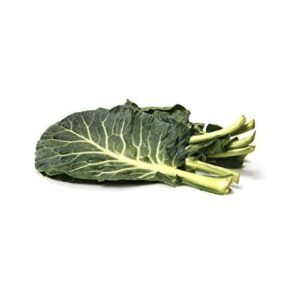
Why settle for wimpy winter greens when you can grow organic collard greens that actually improve with cold?
These nutrition powerhouses pack 232% of your daily vitamin K needs while thriving in freezing temperatures.
Plant them in well-drained, nitrogen-rich soil 6-8 weeks before first frost, spacing 18-24 inches apart for proper airflow.
Mulch around plants to protect roots and retain moisture.
Harvest outer leaves first, allowing continuous growth throughout winter.
After frost exposure, starches convert to sugars, creating sweeter, more tender leaves.
Store fresh leaves in refrigerator crisper drawers for up to two weeks.
Best For: Gardeners and cooks who value organic, nutrient-packed greens that thrive in winter and improve in flavor after frost.
- High in vitamins A, C, K, antioxidants, and fiber
- Cold hardy and sweeter after exposure to frost
- Continual harvest possible with outer leaf picking
- Bundle size may vary between purchases
- Requires immediate prep after harvesting to avoid bitterness
- Needs consistent soil moisture and spacing for optimal growth
3. Ultra Fine Garden Plant Netting
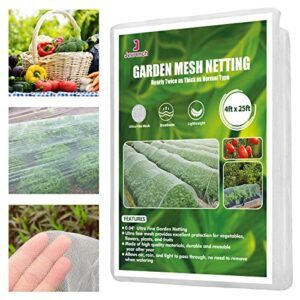
Why struggle with pest damage when Ultra Fine Garden Plant Netting offers bulletproof protection? This heavy-duty PE mesh features 0.8mm x 1mm holes that block carrot flies, cabbage moths, and flea beetles while allowing 90% light passage.
You can cut the reusable netting to fit any garden bed or drape it over fruit trees. To further extend the growing season, consider utilizing cold frames for added protection.
The material withstands multiple seasons when handled carefully, eliminating the need for chemical pesticides in your winter vegetable beds. Just secure the edges properly to prevent pest intrusion underneath.
This mesh maintains plant growth conditions while creating an effective barrier against even the smallest garden invaders.
Best For: Gardeners seeking reliable pest protection for vegetables, fruits, and seedlings without using chemical pesticides.
- No finished edges lead to fraying and material can rip easily when using clips or in harsh weather
- Requires careful handling and proper edge securing to prevent pest intrusion underneath the barrier
- May not withstand extremely windy or dusty conditions long-term despite heavy-duty construction
- Ultra fine 0.8mm x 1mm mesh blocks small pests like carrot flies, cabbage moths, and flea beetles while allowing 90% light passage
- Durable PE material lasts 3-5 years with proper care and can be cut to fit any garden bed or application
- Eliminates need for chemical insecticides while maintaining optimal growing conditions with 95% air flow
4. Birch & Meadow Savory Herb
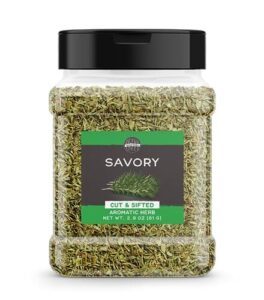 View On Amazon
View On Amazon Winter savory stands out as a hardy herb that’ll keep producing fresh leaves throughout winter’s harshest months.
This evergreen perennial tolerates temperatures down to 10°F, making it perfect for zones 6-9.
You’ll appreciate its strong, peppery flavor that enhances meats, beans, and soups while providing natural pest control benefits.
The Birch & Meadow variety offers excellent value with its 2.9-ounce container, delivering rich, slightly smoky taste that’s particularly useful for acid reflux sufferers as a vinegar alternative in dressings.
Best For: Gardeners and home cooks in zones 6–9 seeking a hardy, flavorful herb that thrives year-round and offers culinary, medicinal, and pest control benefits.
- Strong, peppery flavor enhances a wide range of dishes and retains taste with long cooking.
- Evergreen, cold-hardy plant tolerates down to 10°F and provides fresh leaves through winter.
- 2.9-ounce container is cost-effective, larger than most local options, and valued for freshness.
- Not suitable for gardens in colder regions below zone 6 or with prolonged sub-10°F winters.
- Strong taste may overpower delicate recipes or those preferring milder herbs.
- Limited availability of larger containers in local stores may require ordering online.
5. JINGOU Automatic Greenhouse Vent Opener
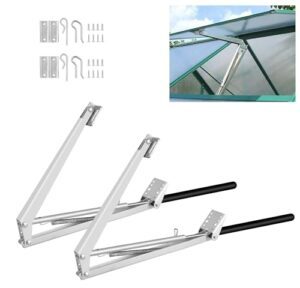
Greenhouse ventilation becomes essential when temperatures fluctuate during winter months.
The JINGOU Automatic Greenhouse Vent Opener solves this problem by responding to temperature changes without electricity or batteries.
This solar-powered device opens vents automatically when temperatures exceed 77°F and closes them when they drop to 59°F.
You’ll appreciate its 15-pound lifting capacity and simple screw-in installation that takes about two hours.
The thermal wax mechanism expands and contracts naturally, making it perfect for maintaining ideal growing conditions in your winter greenhouse setup, with a reliable automatic function.
Best For: Gardeners seeking low-maintenance, solar-powered greenhouse ventilation for reliable, automatic temperature control.
- No electricity or batteries needed; operates solely on solar heat
- Lifts up to 15 pounds, suitable for most greenhouse vents
- Straightforward installation, with positive feedback from older users
- Mixed durability and build quality reported by customers
- Some units may fail within one season or arrive damaged/missing parts
- Assembly instructions may be missing or unclear
6. Michigan Peat Compost and Manure
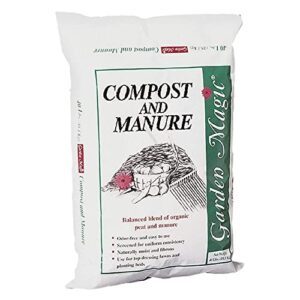
Providing essential soil nutrition during winter’s harsh months, Michigan Peat’s compost and manure blend delivers the foundation your cold-weather garden craves.
This 40-pound bag combines reed sedge peat with composted animal manure, creating an odorless, ready-to-use mixture that covers 0.75 cubic feet.
You’ll enhance soil structure, improve moisture retention, and boost nutrient content without additional mixing.
Apply it as top dressing or till directly into beds for immediate results in both vegetable and ornamental gardens.
Best For: Home gardeners looking for an easy, odorless way to enrich soil in small-scale gardens, raised beds, or containers.
- Ready-to-use, odorless blend simplifies application and keeps gardening pleasant.
- Improves soil structure, moisture retention, and nutrient content for healthier plants.
- Versatile for lawns, raised beds, and container gardens.
- Coverage area is limited (0.75 cubic feet per bag), so not ideal for large projects.
- Must be stored in a dry spot away from sunlight to maintain quality.
- Regulatory checks may be needed for resale or large-scale use in Michigan.
Extending The Growing Season
You can extend your growing season substantially beyond the typical frost dates by using protective structures and strategic planting methods.
These techniques allow you to harvest fresh vegetables and maintain productive garden beds throughout winter, even in challenging climates.
Cold Frames and Hoop Houses
Cold frames and hoop houses transform your garden’s potential by creating protective microclimates that extend growing seasons.
These simple structures use passive solar energy to warm soil and shelter plants from harsh conditions.
Cold frame gardening requires minimal DIY construction using materials like old windows or polycarbonate panels, while hoop tunnels need PVC pipes and row covers.
Both offer excellent ventilation strategies and natural pest control without complex heating options.
Greenhouse Gardening for Winter
Investing in a greenhouse transforms your winter vegetable gardening experience through precise temperature control and extended growing seasons.
Supplemental heating options maintain ideal 50°F minimums, while automated ventilation needs prevent humidity issues.
Strategic lighting strategies compensate for shorter days, supporting photosynthesis in crops like kale and spinach.
Proper pest control and careful crop selection maximize your greenhouse’s potential year-round.
Winter Sowing Methods
Trying winter sowing gives you a head start on spring, letting you direct sow seeds in covered containers right outdoors.
Focus on container selection for drainage and airflow, and practice seed hardening to boost survival.
This method harnesses microclimate benefits, often improving germination rates, and with reliable winter garden techniques, winter garden planning and garden preparation are easier for seed starting.
Maintaining Winter Gardens
Once you’ve established your winter garden, consistent maintenance guarantees your plants thrive through the coldest months.
Proper pruning, strategic watering, and vigilant pest management will keep your garden healthy and productive until spring arrives.
Winter Pruning and Plant Care
During winter’s dormant season, pruning becomes your garden’s best friend.
Target dead or damaged branches first, as they’re vulnerable to disease and pest problems.
Winter pruning techniques work best on dormant trees and shrubs like dogwoods and witch hazel.
Remove crossing branches to improve air circulation and prevent future issues.
Apply fresh mulch around pruned plants for protection, and monitor regularly for signs of stress or winter damage, using techniques that help with air circulation and prevent issues related to disease.
Watering Techniques in Cold Weather
Keep an eye on soil moisture monitoring, since overwatering risks ice formation and waterlogging.
Aim for dormancy hydration—water in mid-morning, so roots absorb moisture before temperatures drop.
Snow benefits your beds by providing winter moisture retention, while condensation management is key in greenhouses.
Use greenhouse watering sparingly, focusing on root moisture, and always let the soil dry slightly between waterings for best winter watering strategies.
Managing Pests and Diseases
Winter pest control starts with proper garden sanitation and regular monitoring. Remove fallen debris and inspect plants weekly for signs of aphids, spider mites, and fungal diseases that thrive in cold conditions.
Effective Winter IPM combines multiple strategies:
- Apply dormant sprays to fruit trees during late winter to eliminate overwintering pests
- Encourage beneficial insects by providing winter shelters and avoiding broad-spectrum pesticides
- Practice disease prevention through proper air circulation and avoiding overhead watering
- Use organic controls like neem oil and insecticidal soaps for active infestations
Planning Ahead for Spring Success
Planning your winter garden with spring in mind transforms cold-weather gardening from survival mode into strategic success.
You’ll create seamless shifts between seasons while maximizing your garden’s productivity and beauty throughout the year, which is a key aspect of achieving seamless shifts.
Early Spring Bed Preparation
As winter’s grip loosens, proper soil preparation winter strategies become your garden’s foundation for success.
Start by adding 2-3 inches of aged compost to enhance soil health while organic matter breakdown enriches nutrients. Test soil pH and adjust accordingly with lime or sulfur.
Remove debris, improve drainage with perlite or sand amendments, and implement weed prevention through strategic mulching. Maintain tools by cleaning and sharpening for peak spring garden planning performance.
| Soil Amendment Type | Application Rate | Primary Benefit |
|---|---|---|
| Aged Compost | 2-3 inches | Organic matter breakdown |
| Perlite/Sand | 1 inch | Drainage improvement |
| Lime (acidic soil) | Per soil test | pH adjustment |
| Sulfur (alkaline soil) | Per soil test | pH correction |
| Bone Meal | 2-4 lbs/100 sq ft | Phosphorus boost |
Gradual Removal of Winter Protection
The gradual removal of winter garden protection requires careful temperature monitoring and weather forecast observation to prevent sudden frost damage.
Starting two to three weeks before your last expected frost date, begin the acclimation period by slowly exposing plants to increasing sun exposure and outdoor conditions.
- Temperature Monitoring: Check daily temperatures and remove covers during warm afternoon hours, replacing them if nighttime temperatures drop below 35°F
- Acclimation Period: Gradually increase exposure time over 7-10 days, allowing insulating plant covers to remain partially open during mild weather
- Protection Storage: Clean and store season extension techniques equipment properly to maintain effectiveness for next winter’s garden care
Selecting Flower Bulbs for Early Color
Nothing beats the thrill of planning winter flower bulbs that’ll burst into color when you need it most.
Choose varieties with proven bulb hardiness and strategic bloom timing to create stunning visual impact. These winter bloomers thrive in cold soil after experiencing necessary chilling temperatures.
Planting depths should be about two to three times the bulb’s height for ideal growth.
| Flower Bulbs | Bloom Period | Soil Drainage |
|---|---|---|
| Snowdrops | Late winter | Well-draining |
| Crocuses | Early spring | Sandy loam |
| Winter aconite | February-March | Moist, fertile |
| Daffodils | March-April | Average drainage |
Plant these winter flowers with excellent pest resistance for reliable spring displays.
Frequently Asked Questions (FAQs)
Is it worth planning a Winter Garden?
Did you know that gardeners can harvest up to 50% more produce by planning for winter?
If you want year-round color, fresh veggies, and less spring chaos, it’s absolutely worth mapping out your winter garden now.
How do you start a garden in the winter?
Start by clearing debris from garden beds and testing soil pH levels.
Choose cold-hardy crops like kale, spinach, and garlic.
Use protective covers, apply mulch, and select plants suited to your hardiness zone.
How do I Keep my Garden healthy during winter?
Amazingly, your winter garden thrives when you’re protective yet mindful.
Apply thick mulch layers, water sparingly during warm spells, monitor for pests regularly, and prune dormant plants carefully to maintain peak health.
What makes a beautiful winter garden?
Beautiful winter gardens feature evergreen structure, colorful bark, seed heads, berries, and frost-hardy plants. You’ll create visual interest through varied textures, heights, and seasonal elements that shine against snow.
Why is winter a good time for a garden?
Winter’s quiet embrace transforms your garden into nature’s planning room, where dormant plants gather strength and you can design tomorrow’s blooms without competing with today’s growth demands.
What is a Winter Garden?
A winter garden is your outdoor space designed to thrive during cold months, featuring hardy plants, frost-resistant vegetables, and structural elements that provide beauty and harvest year-round.
How to plan a winter garden?
Did you know 70% of gardeners overlook sunlight shifts in colder months?
Start by checking your garden’s light and drainage, choose frost-hardy plants, update your calendar, and prep tools—think of it as setting the stage for a show.
How to prep your garden beds for winter?
Clear garden beds of debris and dead plants, then add 2-3 inches of aged compost or well-rotted manure.
Apply 4-6 inches of organic mulch like straw or shredded leaves to protect soil from freeze-thaw cycles.
How to style a winter garden?
Like a winter stage set with living sculptures, you’ll style your garden by creating structural layers with evergreen plants, ornamental grasses, and hardy shrubs.
That maintain visual interest throughout the cold months.
What vegetables go in the winter garden?
You’ll thrive growing root vegetables like carrots, parsnips, and turnips that sweeten after frost. Add leafy greens including kale, spinach, and Swiss chard for continuous harvests down to 20°F.
Conclusion
If Benjamin Franklin had a greenhouse, he’d agree that winter garden planning strategies are all about preparation and timing.
By choosing the right cold-hardy plants, amending your soil, and using covers or cold frames, you can keep your garden productive even as temperatures drop.
Review past seasons, adjust your schedules, and use practical tools to protect your crops.
With these winter garden planning strategies, you’ll set yourself up for cold-weather success and a strong start come spring.
- http://depts.washington.edu/uwbg/docs/WinterGardenMap2018.pdf
- https://sites.tufts.edu/pollinators/2019/11/why-you-should-leave-the-leaves-and-give-yourself-a-break-from-yard-work/
- https://extension.unh.edu/blog/2020/11/can-you-compost-winter
- https://en.wikipedia.org/wiki/Hardiness_zone
- https://landscapeofus.com/garden-news/usda-winter-hardiness-zones/



